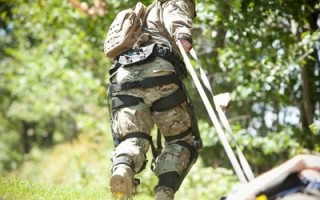B-Temia & Lockheed Martin enter agreement to license bionic augmentation technology
NewsApril 11, 2017

ORLANDO, Fla. Lockheed Martin and B-Temia, Inc. officials entered into an agreement to license B-Temia's bionic augmentation technology called Dermoskeleton. Lockheed plans to use the licensed technology for its FORTIS exoskeleton program.
B-Temia's engineers developed Dermoskeleton as the basis for computer-controlled devices that can increase mobility and load-carrying capacity by counteracting overstress on the lower back and legs. Lockheed Martin's technology license permits use of B-Temia technology to products for military, industrial, commercial, and first-responder applications.
"This agreement confirms our company's technology leadership and value of our work in increasing human mobility in both industrial and defense applications," says B-Temia President and CEO Stéphane Bédard. "Our arrangement with Lockheed Martin provides another avenue for our bionic technology to enhance human performance."
"This technology offers a pathway to increased loadbearing and greater agility for our FORTIS industrial exoskeleton," says Glenn Kuller, Advanced and Special Programs vice president at Lockheed Martin Missiles and Fire Control. "It can also help to solve existing limitations of powered exoskeletons for our military and first responders. We're excited about the potential we see here."
The FORTIS exoskeleton is an unpowered, lightweight exoskeleton that increases an operator's strength and endurance by transferring the weight of heavy loads from the operator's body directly to the ground through a series of joints at the hips, knees and ankles. Originating from Lockheed Martin's exoskeleton research to assist soldiers in carrying heavy equipment over long distances, the same principles were applied to exoskeleton development for use in industrial settings.








